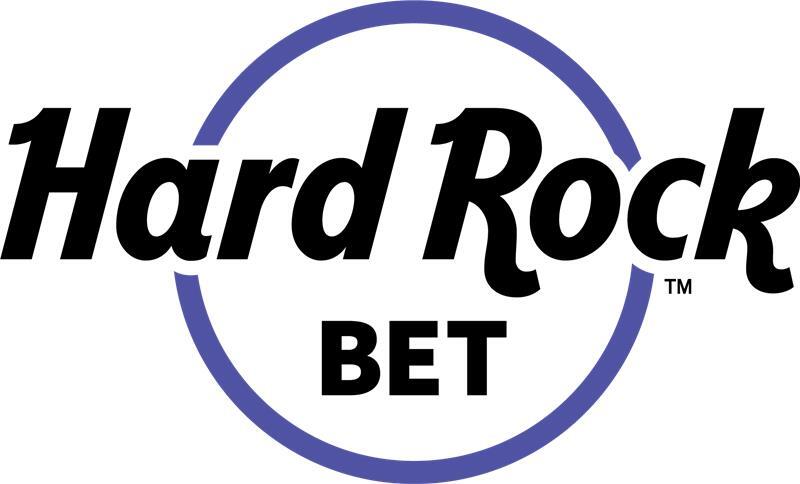Martingale Blackjack System
The Martingale blackjack system is a simple betting strategy where you double your…
Category Ratings
This page contains references to products from one of our advertisers. We may receive compensation when you click on links to those products. Terms apply to the offers listed on this page. For an explanation of our Affiliate Policy, visit this page.
For example, if you start with a $5 bet and lose three hands in a row, your next bets would be $10, $20, and $40. When you win, you reset to your original $5.
Unlike “balanced” systems like the Fibonacci or Labouchere, which increase bets more gradually and spread recovery over several wins, Martingale puts all the pressure on a single win to erase losses.
It’s more aggressive and can burn through a bankroll quickly, especially during long losing streaks.
Still, many U.S. players try it in 2025 for one reason: its simplicity. It doesn’t require tracking numbers or complex math—just patience, discipline, and deep pockets.
The idea that “a win must come eventually” makes it feel approachable, even if that belief can be risky.
At a glance:
Very high risk; best used on 3:2 six/eight deck blackjack tables with high max bets and a bankroll of 100+ units.
Core Principles of the Martingale System
For success, you must follow the core principles associated with the Martingale System. Review the principles below to ensure you understand the strategy’s basics.
- Base unit = smallest table stake you are comfortable repeating. Consider how much you can afford to lose and start with the lowest possible limit.
- After a loss: stake = previous stake × 2. If you wager $2, your next stake after a loss would be $4.
- After a win, reset to the original unit. Once you win, start with $2 and begin the process again. Continue to follow this process to mitigate potential overall losses
- Objective: Recover cumulative losses and lock one-unit profit at the first win. Keep your eye on this objective and don’t continue to chase losses after a certain point.
- 2ⁿ pattern: Each consecutive loss with this method increases your stake exponentially, following a 2ⁿ pattern. This rapid growth means players can quickly hit table betting limits or run out of bankroll, making long loss streaks the biggest threat to the system’s success.
Historical & Mathematical Background
The Martingale betting method dates back to 18th-century France, where it was used in simple coin-flip-style games. Its core idea—doubling your stake after each loss—was designed to ensure that one win would recover all losses and deliver a profit equal to the original wager.
The system gained widespread popularity in the UK during the Victorian era, particularly among roulette players who bet on red or black.
In blackjack, especially in the common six-deck game where the dealer stands on soft 17 (S17), the system may seem promising but is mathematically flawed. The expected value (EV) per sequence is calculated using:
EV = House Edge × Total Stakes
Even doubling after each loss, the house edge in a standard S17 blackjack game remains negative for the player—often estimated at around −0.48% depending on the exact rules and strategy used. The only change is in variance—the size and speed of swings in your bankroll.
Martingale doesn’t shift the edge in your favor; it simply increases risk the longer a losing streak continues.
Table Requirements and Optimal US Setup
For Martingale blackjack to be realistically playable, you need forgiving table conditions. The ideal setup includes:
- 3:2 payout on blackjack (not 6:5)
- Dealer stands on soft 17 (S17)
- Double down after split (DAS) allowed
- Minimum bet of $1 and a table max of at least $5,000 to allow progression
Leading live providers like Evolution, Playtech, and Pragmatic Play typically offer tables with $1–$2,500 or $5–$5,000 limits in regulated US markets like New Jersey and Michigan. This gives enough space to survive 8–9 Martingale steps.
Step-by-Step Walk-Through With Annotated Bet Tracker
Below are steps to select a US-based casino and track your play with the Martingale Blackjack strategy.
Step 1: Choose a US-licensed casino
You can start by looking for a license footer from the New Jersey DGE, Michigan Gaming Control Board, or Pennsylvania Gaming Control Board.

Step 2: Register & Pass KYC
Click “Sign Up” or “Join Now” and fill in your name, date of birth, email, and last four digits of SSN.
Then upload documentation if required. Some sites only require an SMS or email verification at the beginning.
- A government-issued photo ID (e.g., driver’s license)
- A recent utility bill or bank statement (proof of address)

Step 3: Opt Into a Blackjack-Friendly Bonus
Choose a welcome bonus that lists blackjack as an eligible casino game. Ensure the deal’s terms and conditions do not exclude table games.
Step 4: Deposit Funds via a US Payment Method
Pick from:
- Debit Card (Visa/Mastercard)
- PayPal
- Online Banking (ACH)
- Play+ or PayNearMe
Minimum deposits usually start at $10–$20.

Step 5: Activate Your Bonus
Once the deposit is complete, your bonus automatically applies or requires a manual claim.
Winnings from the bonus must be wagered as listed in the welcome deal, or are free to withdraw when no requirements are listed.
Six-Hand Martingale Blackjack Example
Use the chart below to play a $2 bet on blackjack games with the Martingale strategy.
Starting Unit: $2 | Goal: Recover losses + $2 net profit
| Hand | Outcome | Bet | Running Total Loss | Comment |
| 1 | Loss | $2 | $2 | Start small |
| 2 | Loss | $4 | $6 | Double after a loss |
| 3 | Loss | $8 | $14 | Stick to the base plan |
| 4 | Loss | $16 | $30 | Still following logic |
| 5 | Win | $32 | +$2 (profit) | Losses fully recovered |
| 6 | Reset | $2 | $0 | Back to base unit |
Begin with the $2 wager.

If you lose, double up to a $4 bet.

Another loss would result in an $8 bet.

With another loss, double the bet to $16.

Now, we are doubling again with a $32 bet. Suppose the cards are in your favor this time, you earn $64, which is a $2 profit. Reset your starting bet and continue the process if you want to use this strategy.
Bankroll Planning & Stop-Loss Rules
To use the Martingale system responsibly in blackjack, start with a conservative bankroll of at least 100 units. For example, if your base bet is $2, your total bankroll should be $200. This gives you enough cushion to survive a losing streak without exceeding table limits or risking too much.
Stick to strict session rules:
- Stop loss: End play if you lose 25% of your bankroll ($50 in a $200 roll).
- Stop win: Lock in profit if you’re up 10% ($20 in this case).
- Never raise your base unit mid-session—this inflates risk and breaks the system’s logic.
Loss Sequence Mini Table (Starting at $2 Unit):
| Spin | Bet | Total Risked |
| 1 | $2 | $2 |
| 2 | $4 | $6 |
| 3 | $8 | $14 |
| 4 | $16 | $30 |
| 5 | $32 | $62 |
| 6 | $64 | $126 |
| 7 | $128 | $254 |
| 8 | $256 | $510 |
To recover a win on the 9th step, you’d need to risk $1,022 total. This is why a well-planned bankroll and hard limits are non-negotiable.
Variations & Tweaks Used by Seasoned US Players
Many US players adapt the basic Martingale system to better suit different risk levels and table types:
Grand Martingale: This version adds an extra unit to each double (e.g., after a $4 loss, the next bet is $9 instead of $8). It increases potential recovery profits but also accelerates how fast you hit table limits—high volatility, best for large bankrolls at high-limit tables.
Mini Martingale: Caps the number of doubling steps (e.g., stop after 3 or 4 losses). While this reduces total exposure and risk of ruin, it also means not every sequence ends in full recovery. Suited to mobile tables with $0.10–$1 stakes.
Anti-Martingale (Reverse): Here, players double after wins, not losses, and reset to the base unit after any loss. This method rides winning streaks rather than chasing losses. It’s less punishing on the bankroll and works well for mobile users with limited budgets.
Each variant trades recovery power for risk management.
High-limit rooms may favor Grand Martingale for short sessions, while Mini or Anti-Martingale appeals to casual players on mobile platforms looking to control variance.
How Does Martingale Compare With Other Systems?
Let’s consider how the Martingale strategy compares with other blackjack systems. Does it work best for blackjack, or should you consider other variants?
Martingale vs Fibonacci
Fibonacci uses a stepped sequence (1-1-2-3-5-8…) where the next bet is the sum of the two previous. This slows the rate of increase compared to Martingale’s doubling, reducing table cap risk. However, it requires tracking multiple numbers.
Martingale vs D’Alembert
D’Alembert increases the stake by one unit after a loss and decreases it by one unit after a win. It’s slower and flatter than Martingale, significantly lowering table limit risk. However, recovery takes longer.
Martingale vs Labouchere
Labouchere requires writing a number line (e.g., 1-2-3) and betting the sum of the first and last. Win = cross off ends; loss = add losing bet to end. The method is flexible but demands careful tracking. Growth is uneven, and long loss streaks can inflate the sequence quickly.
Martingale vs Oscar’s Grind
Oscar’s Grind focuses on winning one unit per session. You only increase your bet after a win and never after a loss. This makes it the most conservative of the five and well-suited for extended low-stress play. Recovery is slower, but risk is tightly controlled.
System Comparison Matrix
| System | Growth Rate | Risk of Table Cap | Mental Load | Best For |
| Martingale | Fast | Very High | Low | High-limit tables with bankroll |
| Fibonacci | Moderate | Medium | Medium | Structured progression fans |
| D’Alembert | Slow | Low | Low | Beginners, casual play |
| Labouchere | Variable | Medium-High | High | Skilled trackers |
| Oscar’s Grind | Very Slow | Very Low | Low | Low-risk, long-session players |
Ideal US-US-facing casinos & Live Studios to Practice the System
BetMGM Live Blackjack (Evolution)
BetMGM offers Evolution-powered live blackjack tables across licensed U.S. states like NJ, PA, and MI. Most tables use six or eight deck shoes with 3:2 payouts, S17 rules, and allow double after split.
Minimums start at around $5 for live games, with high-limit rooms reaching $5,000 or more. For details, visit our BetMGM review.
DraftKings Live Casino
DraftKings Live Blackjack is available in most regulated U.S. states. Tables offer 3:2 payouts, double after split, and typically S17 rules. Table limits vary by tier, and options include $5 to $2,500 per hand.
View the full breakdown in our DraftKings review.
FanDuel Live Dealer Blackjack
FanDuel runs Evolution and Playtech tables across most U.S.-legal iGaming states. Standard tables feature 3:2 payouts, S17, DAS (double after split), and auto shuffling between shoes. Stakes begin at $0.50, with a ceiling above $10,000.
Cashback incentives are less frequent at FanDuel, but deposit-match promos often support table play at 10–20% contribution. Learn more in our FanDuel review.
For more alternatives, browse blackjack-specific options in the Live Casino hub.
Common Misconceptions & Pitfalls
Many players fall into the trap of believing that a win is “inevitable” if they keep doubling their stake. While Martingale appears logical on paper, the math tells a riskier story.
For example, after eight consecutive losses starting with a $5 base bet and doubling each time, the ninth wager would be $1,280, with a total of $2,555 risked across all hands—assuming a strict Martingale progression without table limits or bankroll constraints.
What’s more, most U.S. online casinos cap table maximums around $2,000–$5,000, cutting progression short when you need it most.
Emotional tilt is another real danger—even seasoned players may overreach or chase losses after rapid swings. Discipline, stop-loss limits, and honest bankroll assessment are critical.
Tips & Tricks for Getting Started with Martingale
- The base unit should be ≤ 1% of your total bankroll
- Track every bet in a spreadsheet or log
- Set deposit and loss limits before your first game
- Practice on free RNG blackjack tables first
- Use a verified blackjack bonus once you’re confident—no hype, just value
Other Applications of Martingale
Martingale isn’t just limited to blackjack—it’s also commonly used in roulette and baccarat. In roulette, players apply the system to even-money bets like red/black or odd/even. In baccarat, it’s often used on Banker or Player wagers due to their near-even odds.
For deeper insight, visit our Martingale Roulette System Guide.
Responsible Gaming
Responsible gambling means setting strict budget limits and sticking to them—never bet more than you can afford to lose. Use session timers and take regular breaks to keep your play in check.
If you need to pause or stop gambling, tools like self-exclusion programs available in several US states can help block access to online casinos.
Martingale is not a guaranteed winning system. It increases risk significantly and should only be used with strict discipline and limits. Remember, no betting system can overcome the house edge over time. Play responsibly and view gambling as entertainment, not income.
Main Takeaways
The Martingale system is a straightforward strategy that appeals to many blackjack players because of its simplicity—double your bet after each loss until one win recovers all losses and earns a small profit. But behind that simplicity lies a serious risk.
Long losing streaks can drain your bankroll fast, and most tables have bet limits that cut the system short before recovery. It doesn’t reduce the house edge—only front-loads your exposure.
Key Points:
- Straightforward negative progression system
- Requires 100+ betting units and generous table limits
- Risk increases exponentially with each loss
- House edge (≈0.5%) remains unchanged
- Strict stop-loss and session controls are essential
FAQs
What is the basic staking step in the Martingale blackjack system?
Start with a base wager (e.g., $5). After each loss, double the stake. After a win, return to the base bet. The goal is to recover all losses and gain one unit.
How large should my bankroll be to survive eight consecutive losses at a $5 unit?
To cover the full progression, you’d need $1,275: $5 → $10 → $20 → $40 → $80 → $160 → $320 → $640.
Does the system work better on S17 or H17 blackjack rules?
S17 (dealer stands on soft 17) is slightly better for players, reducing the house edge. It favors Martingale use marginally more than H17.
How is the Grand Martingale different from the standard progression?
Instead of just doubling, Grand Martingale adds one extra unit each time. It raises risk and recovery speed.
What happens when the table maximum is reached before a win occurs?
You can’t continue the sequence. This locks in all prior losses and ends the cycle with no recovery.
Can Martingale be paired with cashback or loss rebate offers to soften variance?
Yes, cashback and loss rebates can help offset losing streaks—but always read the terms.
Is the strategy viable on multiplier tables like Lightning Blackjack?
No. These games have variable payouts and higher house edges, which disrupt Martingale’s even recovery logic.
Do online casinos allow auto bet macros for Martingale sequences?
Most don’t. Automated betting tools are usually against the terms without the operator’s permission.
Will using Martingale breach max bet clauses attached to bonuses?
Yes. Rapidly increasing bets can violate max bet limits, voiding bonus winnings.
How do I decide when to quit a session, after a win cycle or a loss cap?
Set a strict stop-loss limit and a modest win goal. Most players quit after 1–2 win cycles or a set bankroll drawdown.
Does playing Martingale for thousands of hands alter the long-run house edge?
No. The house edge remains the same over time. Martingale only shifts variance, not outcomes.
For almost two decades, Sadonna has remained at the forefront of the gambling industry in the US and abroad, covering the latest news and legal updates. Sadonna’s goal is to provide sports bettors and casino players with premium content, including comprehensive details on the US industry.













